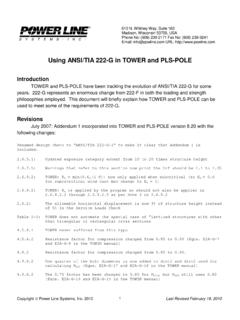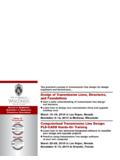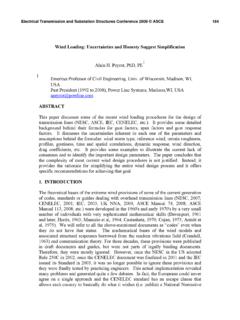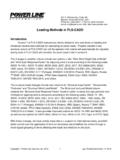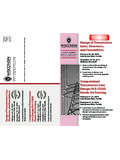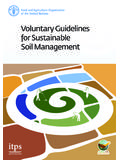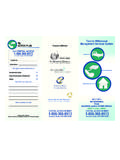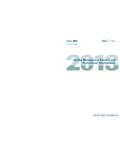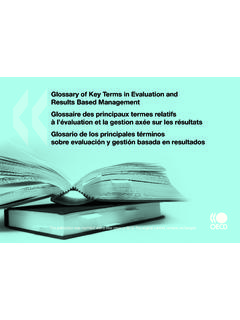Transcription of Vegetation Management Takes to the Air
1 VegetationManagement Takes to the AirBC Hydro pilots the use of LIDAR and PLS-CADD to identifyvegetation encroaching on transmission Bryan Hooper, British Columbia Hydrourrently, BC Hydro (Vancouver, British Columbia,Canada) Vegetation Management field personnelwork from the ground or from helicopters whendetermining what Vegetation violates clearancerequirements and needs to be removed. This involvesa lot of estimating, as the field crews need to predict wherethe conductor would be under maximum operating tem-perature or wind condi-tions.
2 It also requires ei-ther estimation or fieldmeasurement of trees todetermine if they wouldencroach required clear-ance zones if the trees a generating ca-pacity of 11,500 MW, BCHydro has 18,000 cir-cuit kilometers of trans-mission lines that rangefrom 69 kV to 500 government utilityis constantly looking forinnovative and low-costmethods to maintainits network. Of course,proper Vegetation man-agement is key to keep-ing its network up Hydro decided toaddress the guessworkinherent in vegetationmanagement by com-bining two technologiesnow in use in its engi-neering department.
3 Thefirst of these involvedusing LiDAR (Light De-tection and Ranging) toquickly survey the transmission line, including the vegeta-tion canopy in the vicinity of the line. The second involvedusing a computer program to accurately model conductorposition and movement, and to identify the Vegetation thatencroached on defined conductor clearance Hydro has been using Power Line Systems ( ) suite of applications, including PLS-CADD, for transmission-line design andline-rating studies since 1995. BC Hydrohas used FE sag-tension analysis for trans-mission-line rating studies since it becamea feature of PLS-CADD in 2001.
4 The FEmodeling results in a more accurate predic-tion of wire behavior in the presence oflarge span-length variations and steep , the more accurateFig. 1. T/L transmission line ground generally results in fewer required changes to anuprated line. It also allows the designer to considersituations like unequal ice and clearance improvementtechniques such as cutting out conductor or shifting slackbetween Hydro currently is using LiDAR survey as a cost-effective method for capturing spatial data on 69-kV trans-mission lines for the purpose of populating its enterpriseGIS utility recently completed a pilot project using thisapproach to determine Vegetation clearance violationson a 230-kV uprating project.
5 The pilot not only deliveredon the reduction of guesswork, but also revealed severalother advantages encouraging the use of the LiDAR/PLS-CADD combination as part of an on-going right-of-wayvegetation Management ProjectThe project was a 230-kV transmission-line uprating on a65-km (40-mile) line serving the Greater Vancouver line was originally constructed in 1945 and initiallydesigned for 50 C (122 F) operation, but electric systemrequirements now call for the circuit to be uprated to a hotoperating temperature of 90 C (194 F).
6 In the first phase of the project, Rudy Rugge and JamesPeters of BC Hydro s engineering group modeled the line inPLS-CADD. Ground structure positions and conductor ten-sion data were derived for the model using LiDAR clearance checks were run with the conductor at thenew required operating temperature, and where additionalground clearance was necessary, the utility employed linemodifications such as raising or adding structures. Also, insome areas where increased ground clearance was neces-sary, small lengths of conductor were removed and insula-tors re-clipped.
7 The finite element (FE) analysis capabilityof PLS-CADD made this this transmission line runs through a watershed thatsupplies the GreaterVancouver area, BC Hy-dro historically hadbeen extremely frugal incarrying out its vegeta-tion maintenance pro-gram, by only removingvegetation perceived topose a hazard to the safereliable operation of thecircuit. Thus, theuprating of the line hadto include vegetationclearance analysis in itsscope since the utilitycould not operate theline at the increasedampacity until it had re-moved all vegetationidentified as a hazard atthe new hot tempera-ture.
8 Therefore, BC Hydro began a pilot project that mergedvegetation points captured by LiDAR survey to the trans-mission-line model and then calculated, plotted and re-ported Vegetation -clearance violations to the newly upratedconductor positions from within those unfamiliar with LiDAR, the survey is carriedout by a helicopter, equipped with sophisticated equip-ment, flying over the subject area. The equipment consistsof a precise navigation system and a scanning laser. Thelaser transmits light pulses (about 10,000 Hz) and measuresreflection times.
9 Distances to objects are calculated andthen combined with the precise positional data from thenavigation system. This provides the LiDAR survey pointswith their coordinate values accurate to absoluteand relative. The LiDAR supplier, in this case TerraRemote Sensing Inc. ( ), classifies thesurvey points into several categories such as ground, struc-ture, conductor and Vegetation in a post flight process. Thesurvey points are provided for client use as ASCII late 2002, BC Hydro approached Power Line Systemswith a request to develop new PLS-CADD features exclu-sively for conductor to Vegetation clearance analysis with aview using LiDAR supplied Vegetation points.
10 PLS-CADD already had the ability to establish conductor positionsunder a variety of wind and temperature conditions. It alsoalready had the ability to perform clearance analyses to anassortment of categories of survey points each with uniqueconductor clearance requirements. In discussion with PowerLine Systems and BC Hydro s Vegetation professionals, thecompanies agreed that PLS-CADD could be used as aneffective Vegetation Management tool with the addition of: A method to identify Vegetation grow-in are Vegetation points that violated designer prescribedhorizontal and vertical clearance to conductor values.
